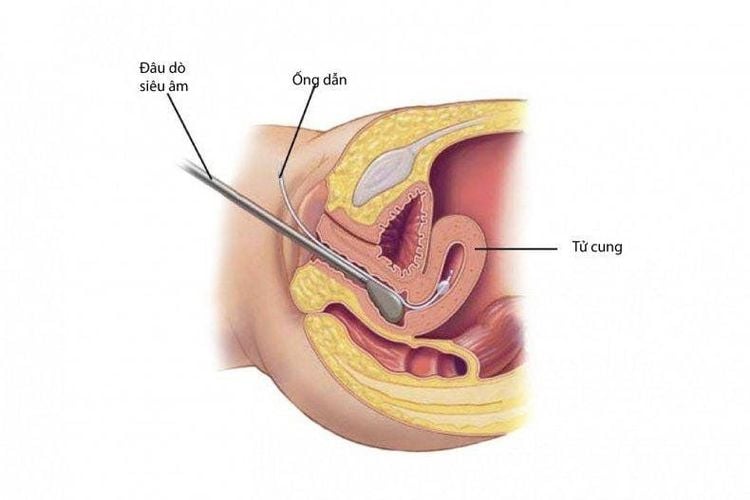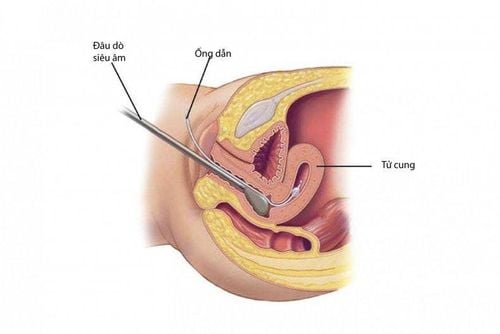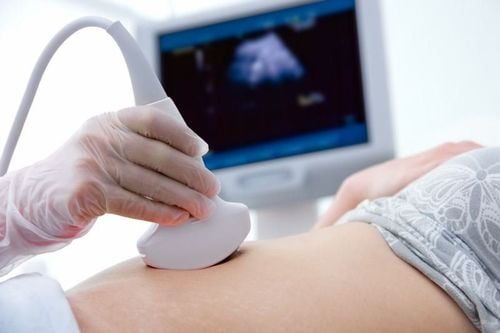This is an automatically translated article.
The article was written by MSc Nguyen Thi Le - Obstetrician and Gynecologist - Department of Obstetrics and Gynecology - Vinmec Danang International HospitalThis method is safe, does not use radiation. In addition to observing the uterus, it is possible to indirectly evaluate the fallopian tubes, abnormalities of the uterus and ovaries.
1. What is uterine pump ultrasound?
Sonohysterography (SIS) is a technique that pumps water from the cervix into the uterus and uses ultrasound to evaluate the inside of the uterus. The fluid will help to see the inside of the uterus in more detail during a non-aqueous ultrasound.
2. Why is uterine pump ultrasound necessary?
Uterine infusion ultrasound can be used to find the causes of many conditions, including uterine bleeding, infertility, and recurrent miscarriages. When the doctor suspects an abnormality that cannot be seen with conventional ultrasound, such as:
Endometrial polyps Uterine fibroids Abnormal uterine cavity Adhesions of the uterus Abnormal vaginal bleeding Infertility Repeated miscarriage

3. When should the uterine pump ultrasound?
The procedure will be performed at the time after menstruation (best before day 12 of the menstrual cycle).
The procedure will not be performed if you are or suspect you are pregnant, or you have a genital infection, or pelvic inflammatory disease.
Before SIS, you will have a gynecological examination and vaginal cleaning.
Urinating clean before the ultrasound, this makes you less uncomfortable and also gives the doctor a better view.
4. How is a hysterosalpingogram performed?
You will lie down during the procedure.
Uterine pump ultrasound has two stages. The first is a transvaginal ultrasound.
Next, fluid is pumped into the uterus through the cervix, and then an ultrasound is performed: the doctor places a speculum, inserts a small tube into the uterine cavity through the vagina, and then pumps water into the uterine cavity. , this water is sterile, hypoallergenic; The doctor will then insert a transvaginal probe and observe for abnormalities.
It takes about 10-30 minutes depending on the patient.

5. What phenomena can be encountered after implementing SIS?
Most women should be able to go home immediately and be able to perform routine tasks. Some of the following symptoms may occur after the procedure:
Slight dull pain in the lower abdomen (may or may not be) Light bleeding Vaginal discharge (a tampon should be worn after the ultrasound) This procedure is safe, but there is still a risk of pelvic inflammatory complications (<1%). Should be re-examined immediately if:
Pain or fever after returning home Changes in the nature and amount of vaginal discharge (color change, bad smell...) Vinmec International General Hospital is one of the hospitals that do not professional quality assurance with a team of leading medical professionals, a system of modern technological equipment, but also outstanding with comprehensive and professional medical examination, consulting and treatment services; civilized, polite, safe and sterile medical examination and treatment space. Customers when choosing to perform tests here can be completely assured of the accuracy of test results.
Please dial HOTLINE for more information or register for an appointment HERE. Download MyVinmec app to make appointments faster and to manage your bookings easily.














